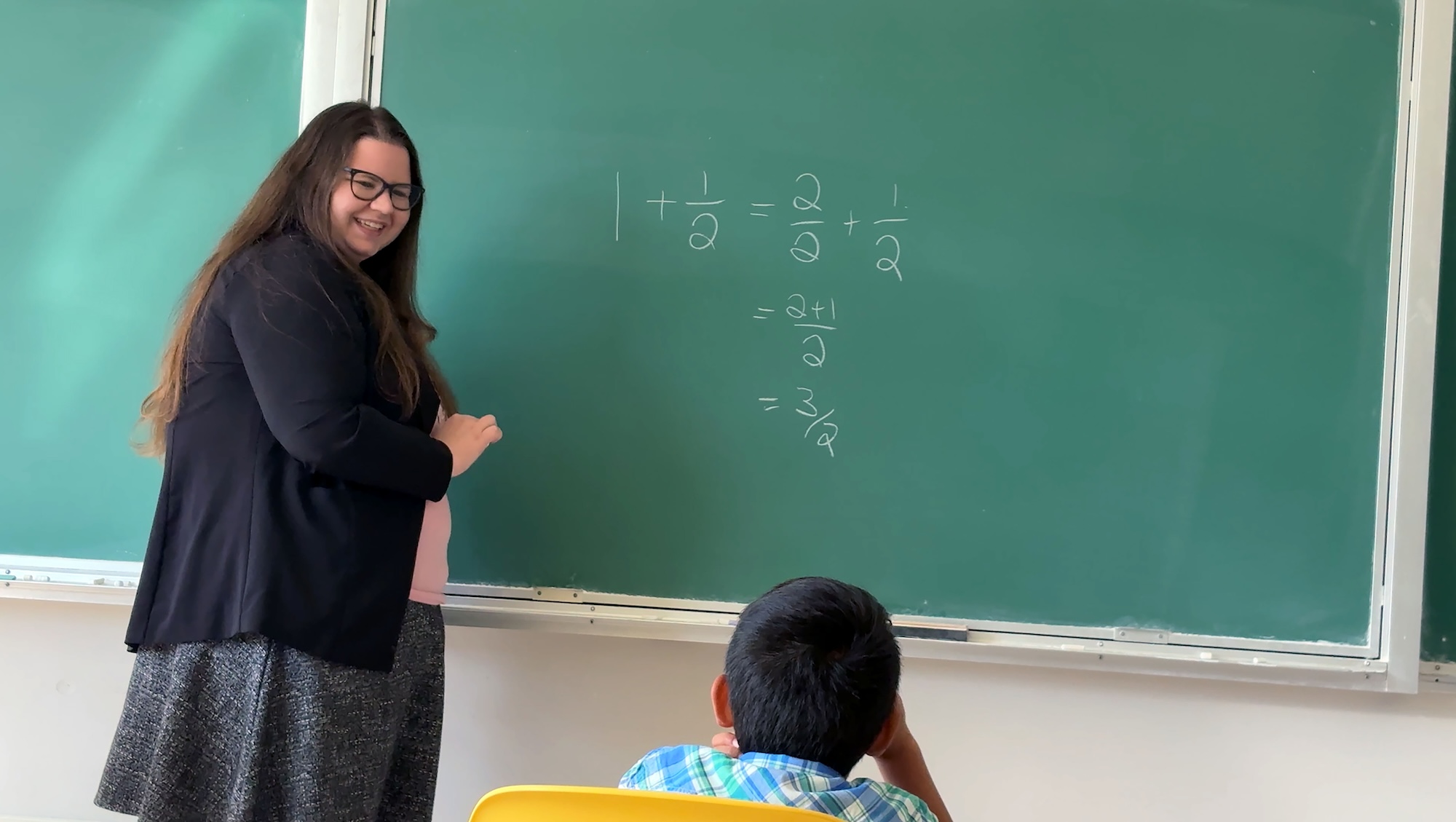How kids can keep their maths skills sharp this summer
June 23, 2025

June 23, 2025

Parents may be looking for fun ways for their kids to avoid a summer slump and keep vital math skills razor sharp after school ends in June.
Dr. Melania Alvarez (she/her), outreach and education coordinator at the Pacific Institute for the Mathematical Sciences and the UBC department of mathematics, and Dr. Lindsey Daniels (she/her), UBC math assistant professor of teaching, discuss how everyday summer holiday activities such as hiking, building sandcastles or picnicking can sneak in real-world math lessons.
MA: Absolutely. Research shows that during long school breaks, students can lose up to two months of math knowledge, which adds up over the years. Math is like a language—it needs consistent use to stick and kids need regular practice to maintain and build their skills.
LD: Supporting and fostering curiosity and learning is key to success in science, technology, engineering and mathematics. When parents are involved, it can boost a child’s motivation and confidence while also helping to develop problem-solving and critical thinking skills.
We know math benefits from consistency, so taking extended breaks may not be beneficial for children’s learning. However, short breaks are encouraged to help the brain cognitively process information. Being consistent throughout the learning process can help students bounce back more efficiently after breaks as well.
LD: Get your kids involved in cooking or baking—these use knowledge of measurements, volumes, fractions, ratios, addition and multiplication. There are a number of core mathematical skills that go into following a recipe, such as doubling or halving a recipe, that can be great for supporting math while having fun. And, you produce a great reward for your mathematical effort!
MA: Recipes are full of math: Ask kids to calculate cooking times or compare temperatures. Have them invent their own snack mix with precise proportions or challenge them to scale a family recipe using only measuring cups. Add a timer or thermometer, and you’ve got a hands-on math lab right in your kitchen.
LD: Rock-paper-scissors, dice games, card games and board games all have math quietly working in the background. Asking children to spot where math comes into play during a game is a fun way to show how engaging the subject can be. Encouraging them to explain their strategies and reasoning also helps build critical thinking and problem-solving skills, all in a low-pressure and entertaining setting.
MA: Turn grocery trips into budgeting games. Give kids a set amount of money and challenge them to plan a picnic or find the best deal by calculating price per unit. At home, sorting groceries by size or expiration date also teaches classification, organization and real-world math.
LD: Some of my favourite places to see math are on hikes or walks. There are a number of different geometrical properties that naturally appear in trees, leaves and flowers. Help your children find different shapes in leaves, find flowers with different numbers of petals or look at the patterns that branches form on trees.
MA: Nature is full of patterns and numbers—spirals in sunflowers, symmetry in butterfly wings, or even how far your Frisbee flies. On road trips, ask kids to estimate travel time, track mileage or calculate gas costs.
LD: There are even a number of mathematical principles that underpin the construction of a sandcastle. There are volumes: how much sand is needed; spatial awareness skills and geometry involved in understanding how the different shapes interact. You can talk to your children about these concepts as you’re building a castle together.
We honour xwməθkwəy̓ əm (Musqueam) on whose ancestral, unceded territory UBC Vancouver is situated. UBC Science is committed to building meaningful relationships with Indigenous peoples so we can advance Reconciliation and ensure traditional ways of knowing enrich our teaching and research.
Learn more: Musqueam First Nation